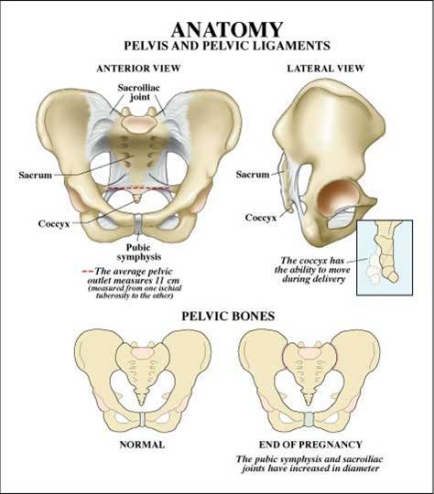Anyone who has been a parent to a toddler is familiar with portions of the story: peanut butter, ice, tears...finally, I asked my husband if he would please set aside some time in the evening to shave his son's head. Head-shaving is a regular occurrence in our house, as my husband prefers to go hairless, and he likes our three and five year old boys to be low-maintenance, also. My husband was happy to comply, and the shearing happened while I was gone for the evening. My boys were sleeping when I came home, and I peeked in on them. I could just make out the dark shapes of my slumbering sons. Their heads were two huge, beaming orbs reflecting the nightlight. Evidently, the gum had required a closer shave than usual, and since shearing is assembly-line style, there was no time to bother with changing the setting on the clippers to spare the hair of the youngest victim.
The following week, the anatomy of the human head became a frequent topic of conversation at our house.
"Why is his head a different shape from mine?"
"Are there holes in the skull for eyes?"
"Are boogers my brains leaking out?" (Sometimes, yes, but that is another story for another day, and I would be hard-pressed to link it with midwifery, other than to say when I first heard the story, I was in a group of seasoned midwives, and the entire roomful recoiled in horror. Yes, gross).
Of particular interest has been the head of our one-year-old son, which is currently unshaven but essentially bald, anyway. It has a bit of a soft spot left; a slight diamond of rubbery scalp in the center of his head. It will be there till he's about two, to allow for his rapidly expanding brain. My children remember well when the soft spot was larger. They enjoyed watching his hair move in time with his pulse (no matter how bald the baby, there are always one or two long hairs centered directly over the soft spot, like a beacon for alien communication.) We had many interesting conversations about the sutures on his head; which are very prominent in a newborn.
The medical term for the soft spot is fontanel, and along with the other sutures of the skull, it is God's gift to babies and birthing mothers.

Years ago, I read a fascinating piece in National Geographic which argued quite convincingly that human childbirth is flawed and risky. Unfortunately, the "expert" who helped to scare the bejeezies out of the author is not an expert in human childbirth at all. Rather, she is an anthropologist, well-versed in evolutionary theory. The expert has a roomful of impressive-looking bone casts, which she uses to demonstrate, quite smugly, the terrible difficulty of trying to "ram" an unyielding skull through an unforgiving pelvis.
The problem with her demonstration is that it is missing two important elements: a uterus, and well-placed rubber bands.
Parents who have been fortunate enough to attend a good childbirth class have a better understanding of the anatomy of childbirth than this very misguided anthropologist. Practically before they have the chance to get comfy on their pillows and introduce themselves, they've seen models like this:
 (photo credit)
(photo credit) |
| credit |
As you can see from the caption, this picture illustrates "Fetal Head Molding," which sounds kind of like what my husband described finding on the scalps of my sons when he shaved their heads. It actually refers to the process by which a baby's skull will mold itself to a perfect fit for the birth canal. Sometimes, especially in a first-time mother, this process takes hours. It is greatly enhanced by the movement of the mother, if she has not had immobilizing drugs. A mother laboring under normal circumstances and unhindered by an unwelcome audience will usually find herself in excellent positions to aid in this process, with no guidance at all. She will swing her hips like a pole dancer on the Las Vegas strip, rock on hands and knees, and hang from her husband's shoulders. While her baby is twisting and nudging himself into a good position, her pelvis is stretching, widening, and shifting to allow for more room. It is able to do this because God made the pelvis not as a uniform chunk of bone, as the plastic castings would suggest, but as intricate puzzle pieces held together with stretchy rubber bands at three points; the sacroiliac joints and the symphisis pubis. These stretchy points are particularly pliable by the time the mother is in labor, thanks to weeks and weeks of her body producing softening hormones. As a mother who has tripped over air molecules and waddled into walls more times than I can count, I can attest that these hormones serve their purpose very well. I have, on occasion, wished that my brain would also produce a "coordination" hormone in the late weeks of pregnancy.

Another advantage the laboring mother has over her lifeless, plastic counterpart is a uterus; an incredibly powerful bag of muscles which take turns contracting here, there, everywhere around the baby. The force of these contractions is astounding.
Now, add in to this mix the famous "urge to push," and you have a pretty darn good system. If that system is left to function with little to no intervention, you've got yourself a cute little baby who probably has a whopper of a cone head, which you will not notice, but your children will. Then, you will spend the next few weeks lightly stroking those sutures with your finger and pressing your nose to the delightfully-scented soft spot on your baby's head and happily sigh to your children that your cone-headed baby and your achy pelvis were "Fearfully and wonderfully made."
Great info Maggie! I'll be sure to share :)
ReplyDeleteImpressive. Grammatically correct with no typos.
ReplyDeleteThe info is pretty cool too. :-)
Welcome to the wonderful world of blogging.